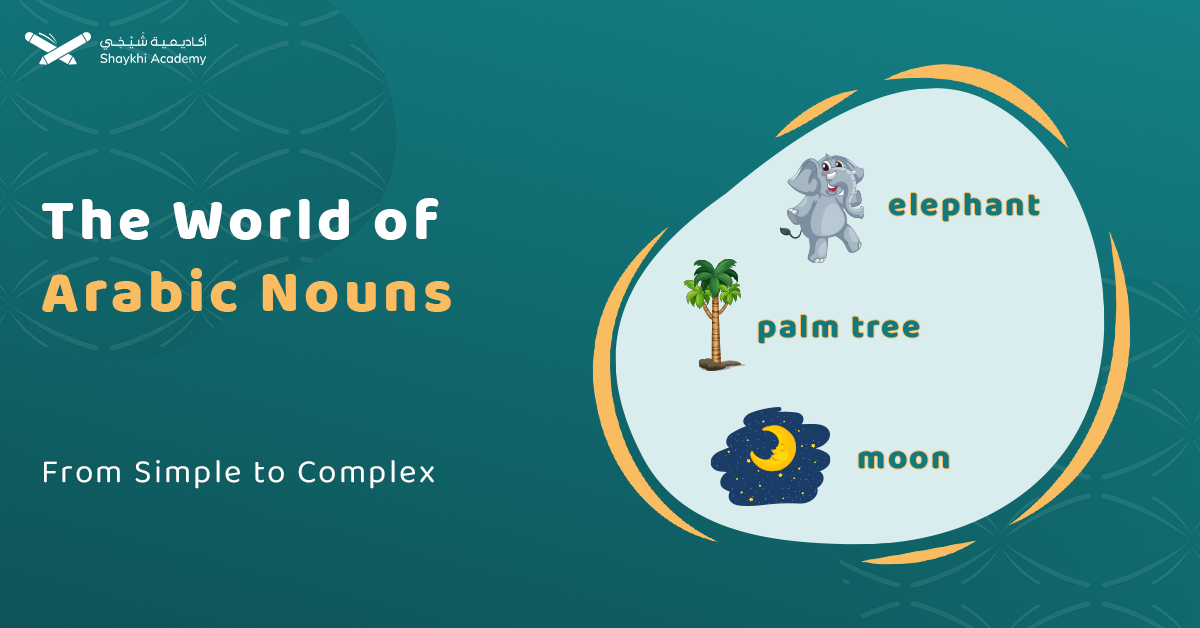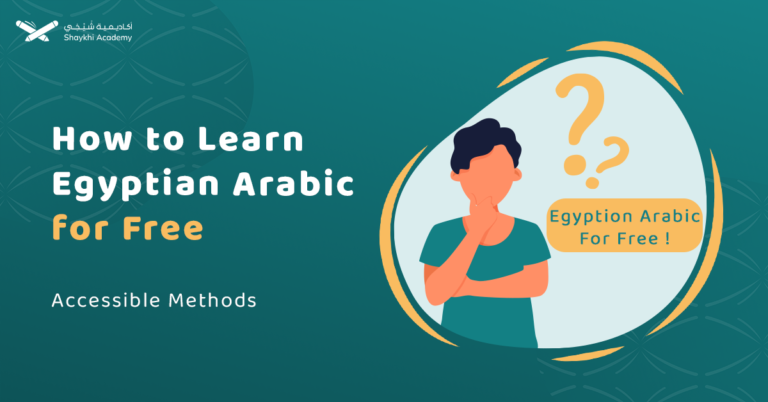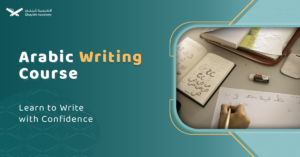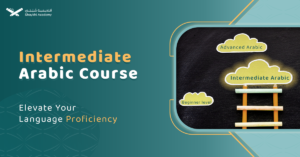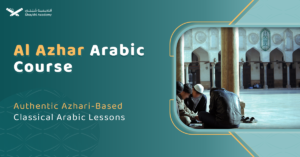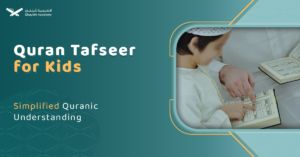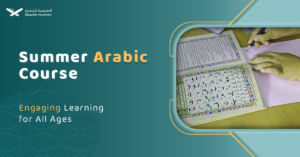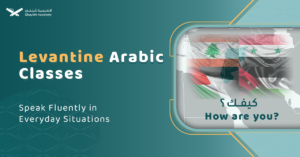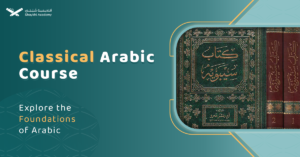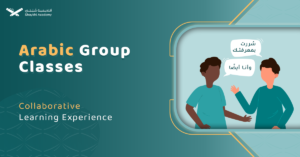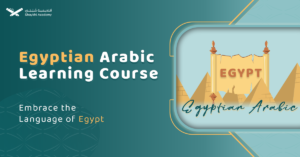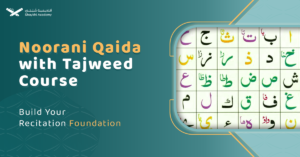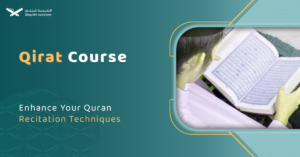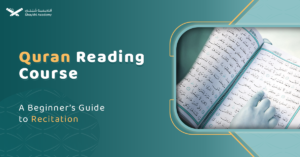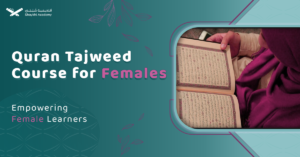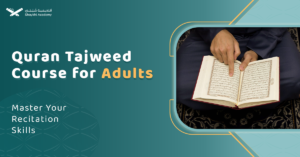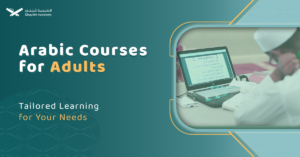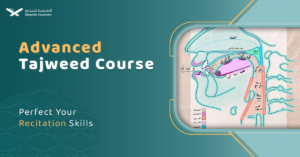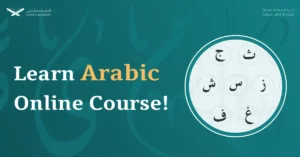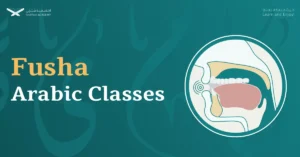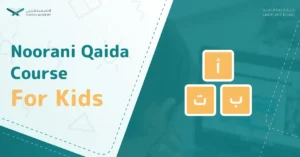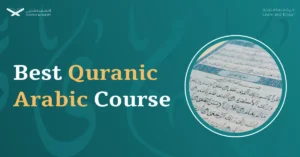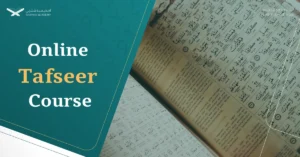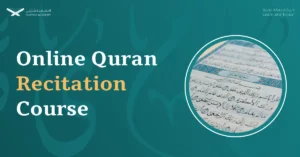In Arabic, nouns are versatile and multifaceted, categorized by their meaning, structure, and grammatical roles. Proper nouns signify specific entities like Ahmed or Cairo, while concrete nouns denote tangible objects, and abstract nouns represent intangible ideas. Structurally, nouns range from singular forms to duals and various types of plurals, even extending to compound formations. Grammatically, Arabic nouns operate within nominative, accusative, and genitive cases, each influenced by specific sentence contexts and marked by distinct vowel signs.
Introduction to Arabic Nouns
The Arabic language has its specific morphology and structure and nouns in Arabic are one of the three main components of the sentence: verbs, particles, and nouns. Nouns in Arabic are referred to as “ism – اسم” which refers to a word that can stand alone having a meaning without the help of another word.
Nouns can refer to someone, an animal, a thing, a place, or even an abstract meaning. They can indicate singular, dual, or plural meanings as well as masculine and feminine. They can classified based on many criteria. In this article, we will learn more about Arabic nouns, examples, classification, and use which will be important to you for mastering the Arabic language.
Nouns Types in Arabic
Nouns in the Arabic language are independent and can stand alone. They could be classified based on several criteria.
A- Types of nouns by meaning.
Types of nouns by meaning are: Proper nouns, Concrete nouns, Abstract nouns, and Time and Place nouns.
B- Types of nouns by structure.
Types of nouns by structure are: Singular nouns, Dual nouns, and Plural nouns.
C- Types of nouns by case.
Types of nouns by case are: Nominative, Accusative, and Genitive.
Types of Nouns By Meaning
Types of nouns by meaning classify nouns based on what they represent and the concept they convey. At this time nouns are classified into 5 categories:
| Meaning | Example | Sentence | |
| Proper Nouns(اسم علم) | Proper nouns refer to specific names of people, places, or things. | Ahmed (أحمد), Cairo (القاهرة), Quran (القرآن) | Ahmed lives in Cairo and he loves the Quran.أحمد يعيش في القاهرة وهو يحب القرآن. |
| Concrete Nouns(اسم ذات) | Concrete nouns refer to physical objects that can seen and touched. | Book (كتاب), Chair (كرسي) | The book is over the chair.الكتاب على الكرسي. |
| Abstract Nouns(اسم معنى) | Abstract nouns refer to concepts, feelings, or things that cannot be seen. | Love (حب), Freedom (حرية) | Everyone loves freedom.يحب الجميع الحرية. |
| Collective Nouns(اسم جمع) | Collective nouns refer to a group of things treated as singular entities. | Team (فريق), Family (عائلة) | This family acted like a team in the finals.هذه العائلة تعاملت كالفريق في النهائيات. |
| Time and Place Nouns(اسم زمان ومكان) | Time and Place nouns refer to the time or place of action. | Morning (صباح), School (مدرسة) | Students go to the school in the morning.يذهب الطلاب إلى المدرسة في الصباح. |
Types of Nouns By Structre
Types of nouns by structure refer to the classification of nouns based on their form and the representation of quantities. It’s classified into 4 categories:
| Meaning | Example | Sentence | ||
| Singular Nouns(اسم مفرد) | Singular nouns refer to one thing or person. | – | Teacher (معلم), Book (كتاب) | Teacher Ahmed gives Omar a book.المعلم أحمد أعطى عمر كتاب. |
| Dual Nouns(اسم مثنى) | Dual nouns refer to two things or persons. It’s formed by adding ـان/ ـين to the singular noun. | – | Two Teachers (معلمان/ معلمين), Two Books (كتابان/ كتابين) | We will attend classes for two teachers. Each one will illustrate the listen from two separate books.سنحضر صفين لمعلمين كل واحد منهم سيشرح الدرس من كتابين مختلفين. |
| Plural Nouns(اسم جمع) | Plural nouns refer to three or more things or people. It has three types | 1- Masculine Plural: Formed by adding ـون/ ـين to the singular noun | Three Teachers (ثلاثة معلمون/ ثلاثة معلمين) | In Quran lessons, we have three teachers.لدينا في دروس القرآن ثلاثة معلمين/ معلمات. |
| 2- Feminine Plural: Formed by adding ـات to singular feminine noun | Three Teachers (ثلاثة معلمات) | |||
| 3- Broken Plural: Have no rule related to the singular noun | Three Books (ثلاثة كتب) | We have three books.لدينا ثلاثة كتب. | ||
| Compound Nouns(اسم مركب) | Compound nouns are made up of two or more words. | – | Traffic Light (إشارة المرور) | In front of our house, there is a traffic light.توجد إشارة مرور خارج منزلنا. |
Types of Nouns By Case
Types of nouns by case means to separate nouns based on grammatical rules. In the Arabic language, we have three grammatical cases:
| Meaning | Case Mark | Example | |
| Nominative Case(حالة الرفع) | Nominative case refers to nouns acting as the subject of the verb. | 1- Shown as Dammah (ــُــ) above singular nouns. | The student writes the assay. يكتب الطالبُ المقال. |
| 2- Shown as Alif (ـا) in dual nouns. | Two students are writing the assay.يكتب طالبان المقال. | ||
| 3- Shown as Wow (ـو) in plural nouns. | Travelers are on the plan now.المسافرون على متن الطائرة الآن. | ||
| Accusative Case(حالة النصب) | Accusative case refers to nouns acting as a direct object of a verb. | 1- Shown as Fatha (ــَــ) over singular nouns. | I saw the student.رأيت الطالبَ. |
| 2- Shown as Ya (ـي) in dual and plural nouns. | I saw two students. رأيت الطالبيْن. | ||
| I saw the travelers.رأيت المسافرين. | |||
| Genitive Case(حالة الجر) | Genitive Case refers to a noun following a preposition. | 1- Shown as Kasra (ــِــ) below singular nouns. | The student went to school.ذهب الطالب إلى المدرسةِ. |
| 2- Shown as Ya (ـي) in dual and plural nouns. | I student this listen from two books.ذاكرت هذا الدرس من كتابيْن. | ||
| We love the illustration of this lesson from the teachers.نحب شرح هذا الدرس من المعلمين. |
How Many Nouns Are There in Arabic?
We can’t exactly know how many nouns are in Arabic as the language has a rich history and new words can be found daily and added. New words were added as a result of three things:
A- Regional Variations and new Dialogues:
In each region around the world speaking the Arabic language there a different nouns found and different ways to say the same things. For example:
| How Are You? | |
| 1- Modern Standard Arabic | كيف حالك؟ Kayfa Haloka? |
| 2- Egyptian Arabic | إزيك؟Ezayak? |
| 3- Levantine Arabic | كيفك؟Kefak? |
| 4- Gulf Arabic | شلونك؟Shlonak? |
| 5- Maghribi Arabic | كيداير؟Kiddayr? |
B- Classical and Modern Arabic:
Classical Arabic is found in the Quran and ancient texts and it’s rich in vocabulary. Modern Standard Arabic is expanding every day as it finds new words for every newly found thing like: Computer كمبيوتر. You can learn more about Modern Standard Arabic and Fusha with Shaykhi Academy.
C- Root System:
The Arabic language has roots for words consisting of three, four, or five letters. From one root we can find more than one word. For example:
| Write (كتب) |
| 1- Book (كتاب) |
| 2- Writer (كاتب) |
| 3- Library (مكتبة) |
| 4- Letter (مكتوب) |
What Are The Signs of A Noun in Arabic?
Noun in Arabic differs from verbs and prepositions by four signs gathered in الاسم يعرف بالخفض والتنوين ودخول الألف واللام وحروف الخفض The noun known by الخَفْضِ, Tanween, the entrance of Alif and Lam, and the particles of خفض:
A- The word is in a grammatical state as خَفْض (to became low)
This grammatical rule helps us to know the classification of a word if it’s a noun or not by changing the end of the word. If a word is in خَفْض state as a result of grammatical influence it’s a noun. For example:
| I passed by Ahmed |
| مررت بأحمدٍ |
B- The Tanween (تنوين)
Tanween is called (Double Vowles) and it’s a silent Noon ـن added at the end of a word. It is shown above or below nouns. For example: Book كتابٌ, Cat قطةً, Female Muslim مسلماتٍ. You can learn more about Tanween at the Shaykhi Academy Tajweed Course.
C- The entrance of Alif and Lam
An easy way to know nouns in the Arabic language is by adding Alig and Lam الـ at the beginning of the word. For example: The man الرجل, The Quran القرآن.
D- The entrance of the preposition
The prepositions are named particles that cause خفض which means they force the last letter to have Kasra (ــِــ). For example:
| I went to the Masjed today. |
| ذهبت إلى المسجدِ اليوم. |
Most Famous Arabic Nouns
There are famous nouns in the Arabic language. We can classify them according to use:
| English Word | Arabic Word | Example | |
| Times | Year | سنة | The year 2025 is coming.سنة 2025 قادمة. |
| Week | أسبوع | The weather this week is cold.إن طقس هذا الأسبوع بارد. | |
| Day | يوم | 1 April is the day of Eid this year.الواحد من أبريل هو يوم العيد هذا العام. | |
| Hour | ساعة | The hour is 2:00 pm.الساعة الثانية ظهرًا. | |
| Minute | دقيقة | The goal comes at 51 minute.سُجل الهدف في الدقيقة 51. | |
| Second | ثانية | Wait a second I want to take my keys.انتظر ثانية أريد احضار مفاتيحي. | |
| Nature Nouns | Moon | قمر | Look at the moon it’s beautiful!انظر إلى القمر كم هو جميل! |
| Star | نجم | The stars are very far away.النجود بعيدة للغاية. | |
| Nile | النيل | The river Nile is located in Egypt.يقع نهر النيل في مصر. | |
| Sea | بحر | The sea is blue.البحر أزرق اللون. | |
| Sand | رمل | The sand is yellow.الرمال صفراء. | |
| Mountain | جبل | The mountains are huge.الجبال ضخمة. | |
| Religion Nouns | Islam | الإسلام | Islam is to have faith in Allah.الإسلام هو أن تؤمن بالله عز وجل. |
| Quran | القرآن | We memorise the whole Quran.نحفظ القرآن الكريم كاملًا. | |
| Salah | الصلاة | The Salah has specific times.للصلاة مواقيت معينه. | |
| Masjed | المسجد | We pray in Masjed.نصلي في المسجد. | |
| Hajj | الحج | Muslims go to Hajj every year.يذهب المسلمين إلى الحج كل عام. | |
| Common Drinks Noun | Tea | شاي | I love tea.أحب الشاي. |
| Coffee | قهوة | My husband drinks coffee in the morning.يحتسي زوجي القهوة في الصباح. | |
| Water | ماء | You should drink plenty of water.يجب عليك شرب كم كافٍ من الماء. | |
| Family Members | Father | أب | I love my father.أحب أبي. |
| Mother | أم | My mother is kind.والدتي لطيفة. | |
| Sister | أخت | I have no sisters.ليس لدي أخوات. | |
| Brother | أخ | I have a big brother.لدي أخ كبير. | |
| Grandfather | جد | My grandfather passed away last month.توفي جدي الشهر الماضي. | |
| Grandmother | جدة | My grandmother lives with us.تعيش جدتي معنا. |
Characteristics of Arabic Nouns
Arabic nouns can characterized based on many things like: Morphology, grammar, and Functionality. They can:
1- Accept the entrance of (ال)
The nouns in Arabic accept Alif and Lam addition at the beginning. For example: The Book الكتاب.
2- Grammatical Rules
The nouns in Arabic can be shown in the three primary cases:
A- Nominative
Nominative nouns show Dammah (ــُــ) at the end of the word. For example:
| The boy read the Quran |
| يقرأ الولدُ القرآن. |
B- Genitive
Genitive nouns show Kasrah (ـِـــ) at the end of the word. For example:
| The boy goes to the Masjed |
| ذهب الولد إلى المسجدِ. |
C- Accusative
Accusative nouns show Fatha (ــَــ) at the end of the word. For example:
| I saw the boy. |
| رأيت الولدَ. |
3- Number
The nouns in Arabic come as singular like: A book كتاب, dual like: Two books كتابان, or plural like: books كتب.
4- Gender
The nouns in Arabic could be masculine like Book كتاب, or feminine like Tree شجرة.
5- Acceptance of Tanween
The nouns in Arabic can show Tanween above or below the end of the word. For example:
| I bought a book. |
| اشتريت كتابًا. |
6- Acceptance of Prepositions
Nouns can come after prepositions in Arabic. For example: In school في المدرسة.
7- Possibility of Being in a Possessive Construct
Nouns in Arabic can be a possessive construct known as إضافة. For example:
| The student’s book. |
| كتاب الطالب. |
Join Shaykhi Academy Now to Learn Arabic
Shaykhi Academy is a leading Online Academy for those looking to learn the Arabic language online through interactive and engaging classes with qualified native Arab tutors. You can join the Arabic Online Course which offers you flexible schedules allowing students to learn at their own pace. Also, teachers at Shayki Academy are Native speakers and are skilled in teaching techniques.
Why Shaykhi Academy?
- Expert Native Tutors: Learn from highly qualified native Arabic speakers.
- Flexible Scheduling: Tailor your classes to fit your busy life.
- Affordable Learning: Access top-quality education at a price that suits you.
- Global Access: Study from anywhere in the world.
Explore Our Arabic Courses:
- Noorani Qaida: Build a strong foundation in Quranic Arabic.
- Comprehensive Arabic Courses: Master the Arabic language, from beginner to advanced levels.
- Fusha Arabic Classes: Delve into Modern Standard Arabic, the key to understanding literature, media, and formal communication across the Arab world.
- Quranic Arabic Course: Enhance your connection with the Quran by learning the language in which it was revealed.
Start Your Arabic Journey Today! Whether you’re just starting or looking to deepen your knowledge, Shaykhi Academy is here to support your journey. Book your free trial now and begin your path to Arabic mastery!

Conclusion
Arabic nouns have their structure and can stand alone having a meaning without the help of another word. They can classified into many types by meaning, structure, or case. We can’t know how many nouns are in the Arabic language as it has a rich history.
The noun could be known by four main marks: It accepts Alif and Lam at the beginning, has Tanween, accepts entering the prepositions and the noun could be grammatically stated as خَفْضْ.
